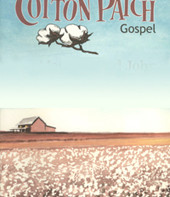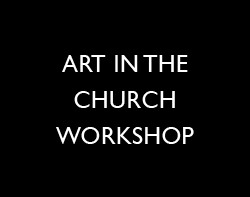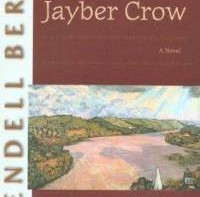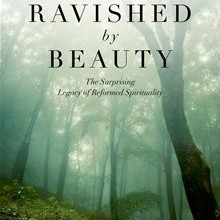Part 2 of this post seeks to answer the questions put forth in part 1 in a more general way. I asked earlier:
- How important is art to our sense of memory and belonging in a place or community?
- In what ways can art cultivate a sense of memory more broadly?
- Does thinking about the artist as rememberer change the way we think about art?
We saw through examples of Berry’s fiction the significant role of remembering in the development of community and identity, what Berry frequently refers to as “membership.” I highlighted Berry’s work to suggest that art provides concrete pictures of what the world might look like; in this case, Berry’s literature provides a way to think about cultivating a culture of remembering in community. Here, I want to draw a few conclusions on the broader role art might play in cultivating communal memory and how our view of art might be affected by thinking about the artist primarily as a rememberer.
So, how does art cultivate memory?
Art cultivates memory in a variety of ways. At a basic level, art is a practice sustained by memory and what is passed on from artist to artist. A farmer learns how to seed a row properly and a sculptor learns hows his tools work with certain types of stone. Artists learn from other artists the way tools work and the most efficient practices for carrying out their art. Beyond the actual practice of making art, it also preserves memories of a culture for current and future generations. Can you think of any other ways to think about the link between art and memory?
Does conceiving of the artist as rememberer change the way we think about art?
If we conceive of the artist as rememberer, then I think we necessarily have to broaden our definition of art. While painters may help us envision a picture of the world at a given time or from a certain perspective, the farmer preserves local knowledge of place in his understanding of the soil, slope of the land, and drainage. Within a broader definition of art, the art of farming is no less important than the art of painting, especially as they relate to cultural memory rooted in place. Berry charges us all with the responsibility of participating creatively in creation and responding with care to the world given by God.
Berry’s judgments about the artist also change the way we think about memory and place. Michelle Roise asked in her comment on Part 1 of this post, “What does this mean for Americans whose history of place has ever been disjointed— from their divergent immigrant forebears (who often purposely strove to forget) to the present day mobility of much of the culture?” When, as a culture, we are overwhelmingly displaced, how can we expect artists, more than anyone else, to remain in one place and preserve memories through their actions? We cannot expect the artist to be a rememberer if we take away every means they have for communicating that memory—namely, the possibility of community and rootedness in place.
Despite this, Berry reminds us that even if the artist neglects or is robbed of this role, the arts always necessarily stand in relation to the world. Their embeddedness in a social practice, their techniques, values, and subject matter, all connect art to the world.
Still, I do not know the best answer to Michelle’s question. Questions of place and community memory are increasingly more complicated in our dis-membered society. But Berry reminds us that the possibility of membership cannot happen except through a cultural re-membering. Artists have an important responsibility as they enhance and interact with the world around them, as they preserve traditions and pictures of community life, as they reveal for us the significance of the particular, and as they show us how to live in and make places. Berry’s picture of the artist as rememberer at least gives us a lens that can clarify our vision in the overly-mobile, even homeless, society in which we live. It suggests that cultivation of the arts is an important, if not necessary, aim for those who believe that personal identity cannot be isolated from the people and place around us.






Hey Jenn, thanks for this interesting reflection on the relationship between art and remembering. I especially like your point about the lack of rootedness in contemporary society, and the potentially adverse affect this may have on the arts, or on what might be called the social rememberer.
But I was a bit puzzled by your suggestion that if we understand the artist as a rememberer (that is, if remembering is one of the things that artists do), then we must expand our definition of art. You suggested that “within a broader definition of art, the art of farming is no less important than the art of painting.” I agree that farming is no less important than painting, but why do we need to broaden our definition of art to include farming? Why not simply say that both artists and farmers are rememberers, but one makes art and the other makes farms. There might be other reasons to broaden one’s definition of art to include farming, but it seems to me that the fact that both are involved in a process that could be described as ‘remembering’ would not be one of them. Furthermore, if all rememberers are artists (and, as you suggest later in the post, remembering is primarily a function of being rooted to, or related to, a time and place) then wouldn’t tying one’s definition of art to the act of remembering require us to consider virtually any human activity as art?
Reading your post I was reminded of the artist On Kawara. I think his work is both simultaneously a good and bad example of what you are saying. One critic describes Kawara’s work this way: “On Kawara documents his life exclusively in terms defined by modern science — by chronicling the time and place of his activities.” (Linda Weintraub, ‘Art On the Edge and Over’) Although many of his works (such as his ‘date paintings’ and ‘I Am Still Alive’) are tied directly to time and place, they completely lack a personal dimension, and so are simultaneously a remembrance, and the effacing of memory. Check out his entry on wikipedia (given the way he makes his art, wikipedia is actually a very appropriate way to learn about the artist), and you can also find a lot of his images by simply searching for him on google.
Jim,
Thanks again for your thoughtful reply. Well, I can tell you what Berry thinks and I can tell you what I think about the definition of art. Berry defines art as “all the ways humans go about making the things they need.” He does include things like farming, gardening, etc in the definition and even calls us all artists, either good or bad, responsible or irresponsible. It’s not hard to see a potential problem with this. If everything is art and everyone is an artist, are there any criteria left for calling art art? Responsibility with the materials might be offered, but even then, its difficult to grasp what the boundaries are. I think this is where the confusion of my post came in. As far as what I think, I also *think* that I want to say that farming can be called art. I am definitely in agreement with Berry on his desire to bring together art and craft again (so he’d say that farming was a craft I think). But like you said, we’d have to require every human activity as art if we take it too far. And that’s not what I want to suggest and should have been clearer.
I think what I wanted to emphasize in regard to the artist as rememberer including a broader definition of art was just that I think we need something more than what modern art theory offers us for a complete picture of the artist as rememberer. By narrowing a view of art, I think we narrow the possibilities of cultural and community remembering. So Berry talks about communities being upheld through stories songs, and actions. This would include things like more formal music and literature, as well as “tall tales” and quilting or farming practices. By widening our definition of art, we widen the potential for that type of creative remembering to take place.
And once again, so sorry it took me a week to get back to you. I have no excuse besides my own forgetfulness/laziness. Ironic, considering my topic of this post. 😉
Thanks, Jenn. This is helpful. I think that I thought you were saying that all acts of remembering should be considered art. But it seems now that you are saying that one of the various things that works of art do is to remember (a time and place?). So, it would be possible to have an act of remembrance that is also not a work of art? I think my confusion came in because I thought you were implying that because farmers and artists both engage in acts of remembrance that both farmers and artists should be considered artists. So, while remembrance does require a broader definition of art (broader, that is, if you don’t already include it in your definition of art), adding remembrance to one’s work of art does not require one to also include farmers as artists. But there may very well be good reasons to say that farmers are artists. and perhaps the reason that farmers should be considered as artists is that they, as Berry says, “go about making the things they need.” Well, regardless of what one thinks about this definition of art at least it seems to avoid the awkward claim, which I thought you were claiming, that my mental remembering of an event (say, of Brandon saying something funny) should actually be considered a work of art.
Jim,
Yeah, I definitely could have been more clear! I don’t think every act of remembrance has to be a work of art. While it requires imagination when I get homesick and remember the way it feels to sit my back porch in summer, it doesn’t mean I’m somehow making art in the process. So, no, the act of remembering doesn’t make the farmer an artist. Many other things might make the farmer an artist–i.e. using his tools in creative ways, etc. The farmer as an artist may contribute to communal memory, which is the point I was trying to make, but he’s not an artist merely because he’s engaged in the action of remembering.
For some reason this is all starting to sound convoluted. Maybe it’d be best to say that yes, I agree with your last points and hopefully I’ve clarified myself at least a little. 🙂
How important is art to our sense of memory and belonging in a place or community?
reflecting also on Michelle Roise’s comment, artists often find themselves in a place and community without being born to it, or even intending it. they can engage with where they are thru art. that is, making which reflects on their experience of the place/community. it may be best to be socially or physically attentive [the latter as with, say, farming or fishing or building]. this can still be done when the social aspect repels on account of the local character or culture. often in village life or small rural towns there is social rejection for the newcomer. and the art might re-member or reflect this quality of the local culture. but there is work/study to engaging as a pilgrim—coming to understand the community, through its various historical, ecological and social aspects. this way makes the artwork real, alive. even the rejection makes it real because it’s not just observing but partaking of wounds. by reflecting on both the community and its wounding, the pilgrim/artist becomes a member—even while rejected.